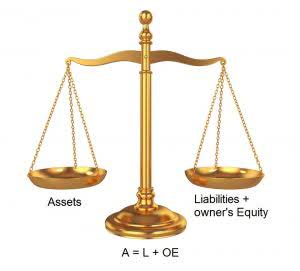
As an example, if a company buys a ream of paper, it writes off the cost in the year of purchase and generally uses all the paper within the same year. For larger assets, the company could be reaping the rewards of the expense for years, so it writes off the expense incrementally over the useful life of the tangible asset. Amortization refers to the allocation of the cost of an intangible asset over its useful life. Commonly, the amortization expense entry records a credit to the asset account instead of a contra asset account. In addition, depreciation is recorded for those items included in the plant and equipment account, even if they are temporarily not in use.
What is your current financial priority?
Straight-line amortization is calculated the same was as straight-line depreciation for plant assets. Generally, we record amortization by debiting Amortization Expense and crediting the intangible asset account. An accumulated amortization account could be used to record amortization. However, the information gained from such accounting might not be significant because normally intangibles do not account for as amortization refers to the allocation of the cost of many total asset dollars as do plant assets.
Amortization vs. Depreciation: What’s the Difference?
This systematic cost allocation over time depicts the asset’s value and usage. The sum-of-the-years digits method is an example of depreciation in which a tangible asset such as a vehicle undergoes an accelerated method of depreciation. A company recognizes a heavier portion of depreciation expense during the earlier years of an asset’s life under this method.

Cost Accounting Standards (CAS): From Confusion to Clarity
- Amortization refers to the allocation of the cost of an intangible asset over its useful life.
- Amortization expense is a vital element in financial accounting, reflecting the usage of intangible assets in a business.
- However, the process for determining useful lives and selecting allocation methods is more difficult compared to the case of depreciation.
- Our work has been directly cited by organizations including Entrepreneur, Business Insider, Investopedia, Forbes, CNBC, and many others.
- This method helps in matching the expenses with the revenue or benefits generated by an asset or liability over time with accuracy.
- Negative amortization is when the size of a debt increases with each payment, even if you pay on time.
On the income statement, typically within the “depreciation and amortization” line item, will be the amount of an amortization expense write-off. Depending on the type of asset — tangible versus intangible — there are differences in the calculation method allowed and how they are presented on financial statements. Understanding these differences is critical when serving business clients. To make informed financial decisions, it is crucial tothoroughly grasp the concept of amortized Cosy.
- Meanwhile, after considering amortization, the balance sheet showcases the adjusted values of long-term assets and liabilities.
- The depreciated amount expensed each year is a tax deduction for the company until the useful life of the asset has expired.
- Amortization is a non cash expense that reduces the book value of intangible assets and is therefore, reflected on a company’s Financial Statements as a reduction to equity or net income.
- However, not all mortgages or loans fully amortize, meaning that the final payment doesn’t represent your having paid the entire amount due.
- For instance, businesses must check for goodwill impairment, which can be triggered by both internal and external factors.
- That is to say, the cost of the asset is allocated to the periods in which the enterprise receives benefits from the assets.
- It is the concept of incrementally charging the cost (i.e., the expenditure required to acquire the asset) of an asset to expense over the asset’s useful life.
For full guidance, consult with qualified professionals in the relevant fields. Accrual accounting permits companies to recognize capital expenses in periods that reflect the use of the related capital asset. In other words, it lets firms match expenses to the revenues they helped produce. However, not all mortgages or loans fully amortize, meaning that the final payment doesn’t represent your having paid the entire amount due. In these cases, there will be a balloon payment due (a large lump sum payment). A partially amortizing loan can be A nightmare https://www.bookstime.com/articles/independent-contractor-tax-form for homeowners or companies that are unprepared.
- Intangible assets can be an important part of a company’s portfolio, depending on what the company does.
- The sum-of-the-years digits method is an example of depreciation in which a tangible asset such as a vehicle undergoes an accelerated method of depreciation.
- Our team of reviewers are established professionals with decades of experience in areas of personal finance and hold many advanced degrees and certifications.
- Next, we will analyze the concept of depreciation, but the theoretical concepts are the same.
The Difference Between Depreciation and Amortization
You should record $1,000 each year in your books as an amortization expense. When an asset brings in money for more than one year, you want to write off the cost over a longer time period. Use amortization to match an asset’s expense to the amount of revenue it generates each year. For instance, borrowers must be financially prepared for the large amount due at the end of a balloon loan tenure, and a balloon payment loan can be hard to refinance. Failure to pay can significantly hurt the borrower’s credit score and may result in the sale of investments or other assets to cover the outstanding liability.

Concerning a loan, amortization focuses on spreading out loan payments over time. On the balance sheet, amortization expense gradually reduces the book value of the intangible asset. This is reflected in the asset’s carrying amount (original cost minus accumulated amortization). An accelerated method where more of the asset’s cost is expensed in the earlier years. Besides the straight-line method, there are other methods to calculate amortization expense for intangible assets. These methods are less commonly used for intangibles than for tangible assets, but they can still be applicable in certain circumstances.

Enterprises with an economic interest in mineral property or standing timber may recognize depletion expenses against those assets as they are used. Depletion can be calculated on a cost or percentage basis, and businesses generally must use whichever provides the larger deduction for tax purposes. They won’t likely appear as line items, so you’ll have to do some digging to make sure that the company isn’t resting on its laurels or overinflating the value https://www.facebook.com/BooksTimeInc/ of its intellectual property.


